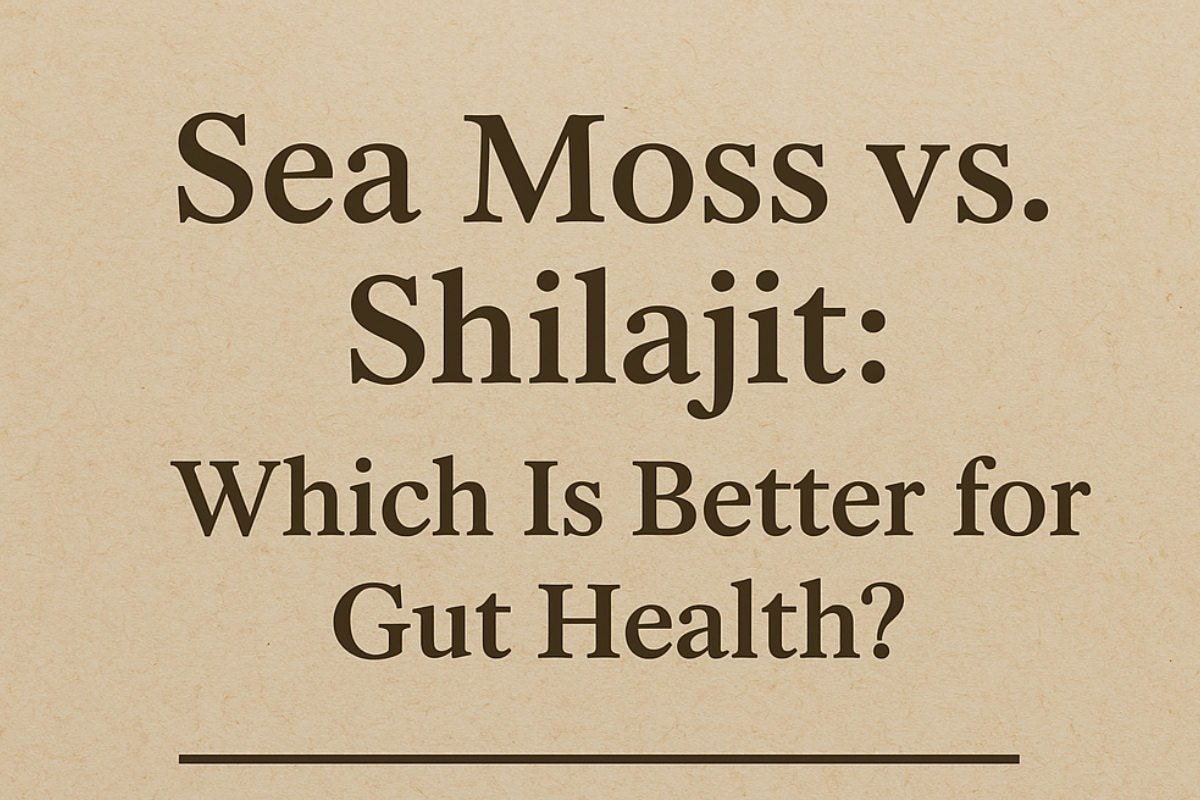
Sea Moss vs Shilajit: A Deeper Look at Two Natural Powerhouses
Author: John S. Matthews | Updated: Monday, 13 October 2025 | 12:30 BST
Across the UK, more people are turning to natural products for everyday wellbeing. Among the best-known are Sea Moss and Shilajit—two ingredients with ancient roots but very different origins. Both are nutrient-dense, minimally processed, and widely praised in traditional systems of health. Yet they work in unique ways and fit different lifestyles.
Featured Summary: Sea Moss is a vegan, ocean-grown algae used as a mineral-rich gel for food and skincare; Shilajit is a mountain resin taken in tiny doses for its fulvic acid and trace minerals. Choose Sea Moss for everyday culinary use, Shilajit for concentrated supplementation.
This long-form guide explores how each ingredient is sourced, what nutrients they contain, how they’re used, and how to decide which might align better with your goals.
- What Sea Moss and Shilajit actually are
- Where they come from and how they’re prepared
- What research says about their benefits
- Safe, practical usage guidelines
- When and how to combine them sensibly
Why These Natural Ingredients Matter
In a world of synthetic supplements and heavily processed foods, ingredients that remain close to their natural state appeal for good reason. Sea Moss and Shilajit both deliver trace minerals and compounds that are increasingly scarce in modern diets. Choosing naturally derived products can also help you connect with centuries-old practices that focus on balance, moderation, and nourishment.
What Is Sea Moss?
Sea Moss (Chondrus crispus), often called Irish Moss, is a red algae that grows along Atlantic coastlines, from the Caribbean to Ireland and Scotland. When soaked and blended, it turns into a silky gel with a mild, salty flavour. It’s a natural thickener, often used in food preparation, smoothies, and skincare routines.
Key naturally occurring minerals and compounds:
- Magnesium – contributes to normal muscle and nerve function
- Iodine – essential for thyroid hormone production*
- Potassium – supports normal blood pressure
- Calcium – contributes to bone health
- Plant-based fibre – helps digestion and gut balance
The soft mucilage inside Sea Moss gives it its famous gel texture and makes it an excellent natural thickener in recipes.
*People with thyroid conditions should speak to a GP before using iodine-rich seaweeds regularly.
Popular Sea Moss Types
- Gold Sea Moss – neutral taste, ideal for daily gels
- Purple Sea Moss – richer in marine pigments and antioxidants
- Blue Spirulina Sea Moss – a modern blend adding plant protein and colour
What Is Shilajit?
Shilajit is a dark, sticky resin that seeps from high-altitude rocks in the Himalayas and other mountain regions. It forms naturally over centuries as plants slowly decompose and become enriched with minerals. In Ayurveda, it’s long been viewed as a rejuvenating tonic.
Key components:
- Fulvic acid – enhances nutrient absorption and antioxidant activity
- Trace minerals – such as zinc, iron, and copper (varies by source)
- Organic acids – may support energy metabolism
Because genuine Shilajit is concentrated and potent, only tiny amounts are needed—typically a pea-sized piece daily dissolved in warm water or milk. High-quality sourcing is crucial, as impurities or adulteration are common in cheaper versions.
Sea Moss vs Shilajit – Key Comparison
| Feature | Sea Moss | Shilajit |
|---|---|---|
| Source | Red algae from Atlantic oceans | Plant-derived resin from Himalayan rocks |
| Format | Gel, dried, or capsule | Resin or capsule |
| Texture | Smooth, gel-like | Sticky, tar-like |
| Culinary Use | Smoothies, soups, teas, desserts | Dissolved in warm liquids |
| Plant-Based | Yes (vegan) | No (not vegan) |
| Key Compound | Mucilage & minerals | Fulvic acid & trace minerals |
How to Use Each Safely
Sea Moss Guidelines
- Start with 1–2 tablespoons of gel daily.
- Add to smoothies, porridge, soups, or herbal tea.
- Store gel in an airtight jar in the fridge for up to 2 weeks.
- Choose wild-crafted or responsibly farmed moss with no preservatives.
Shilajit Guidelines
- Use a pea-sized amount (≈ 300 mg) once per day.
- Dissolve in warm—not boiling—water, milk, or herbal tea.
- Follow a five-days-on / two-days-off cycle.
- Buy from trusted suppliers with lab testing.
Can They Be Used Together?
Yes—many people take both, but in moderation. Sea Moss provides gentle daily nourishment, while Shilajit delivers trace minerals and fulvic acid in micro-amounts. Introduce one at a time and observe how your body responds before pairing.
Related Reading
Disclaimer: Content is for general information and not medical advice. Always consult a healthcare professional before introducing new supplements, especially if pregnant, breastfeeding, or on prescribed medication.
